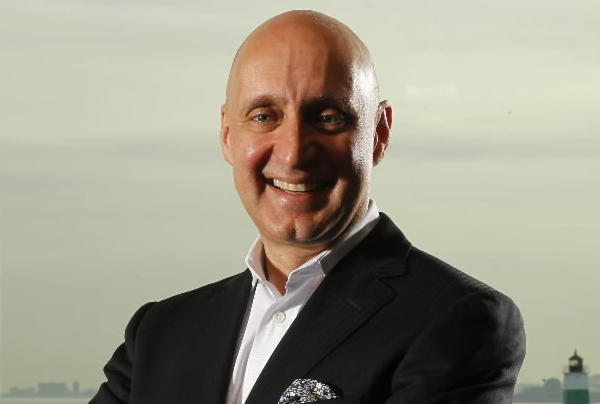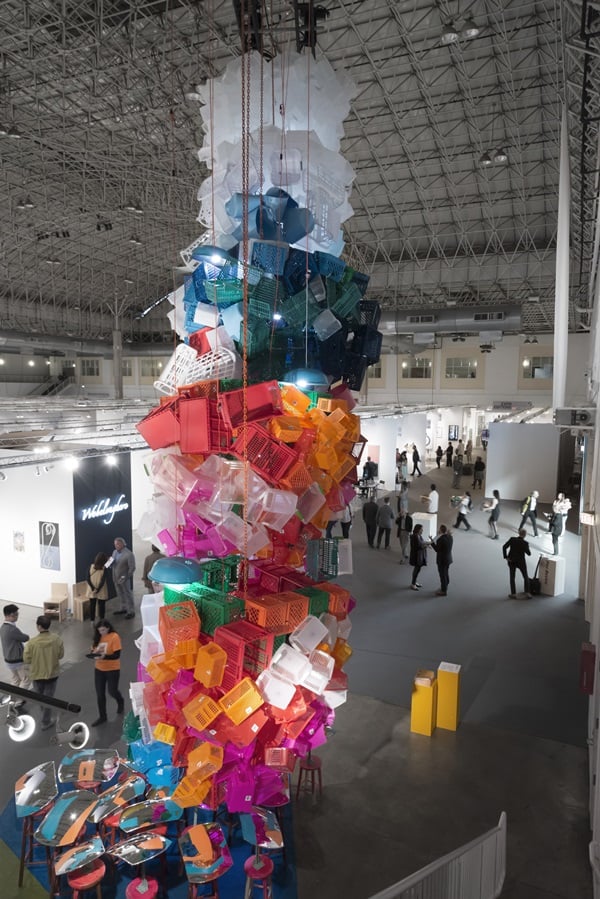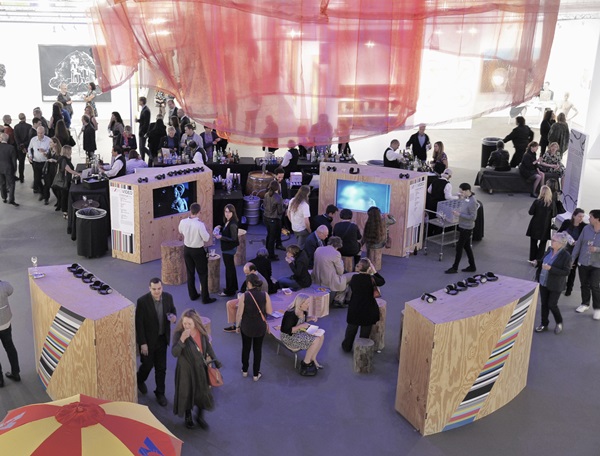Analysis
Tony Karman’s EXPO Chicago Is More Engaged With the Windy City Than Ever
We spoke to the director about the fair's new developments.

We spoke to the director about the fair's new developments.

Eileen Kinsella

EXPO Chicago, now in its fourth year, is more engaged with the city than ever. This year, the IN/SITU program—which allows exhibiting galleries to showcase large-scale installations and site-specific works—is being expanded outside the fair space to locations throughout Chicago.
Also new to this year’s edition is the inaugural Greater Midwest Curatorial Forum. “We are hosting and flying in 30 top regional curators,” the fair’s founder and director Tony Karman told artnet News in a phone call. “Not only for them to come to the fair, but also for them to convene to have a professional opportunity to meet with their colleagues here in Chicago.”
These types of programs, he said, are intended “to continue the layering.” They’re carried out to support the exhibitors at the fair.
EXPO Chicago opens with a vernissage September 17 at Chicago’s Navy Pier and the continues through Sunday, September 20. Under Karman’s leadership, EXPO which launched in 2012 (the same year as the demise of the long-running Art Chicago), has infused new energy into the city’s art scene. The annual event seems to get better with each year while losing none of its sharp focus and manageable selection of 140 international galleries.

An installation by Jessica Stockholder was part of the IN/SITU program at EXPO Chicago 2014.
Photo: Courtesy of Carol Fox & Associates.
Ongoing special sections this year include “EXPOSURE,” which affords younger, up-and-coming galleries the chance to participate. On site programming includes “Special Exhibitions” which showcases international organizations, non-profits, and institutions, while “Dialogues” offers panel discussions in partnership with the School of the Art Institute of Chicago.
Other sections to watch out for include EXPO VIDEO, a curated group of new media, film, and video works, a joint project with Columbia College Chicago, and the IN/SITU showcase, which has been newly expanded this year.
“Every year, our outreach and programming matures,” said Karman. “I’m really looking forward to what Chicago gets to show the world along with the fair. What I mean by that is all of the strategic alignments and openings also taking place. The city is even more engaged than in previous years.”
Karman ticked off a list of shows opening around the city roughly timed to coincide with the opening night preview, EXPO Vernissage, including the David Adjaye exhibition at the Art Institute, a performance by Keren Cytter at the Museum of Contemporary Art, Kerstin Brätsch at the Arts Club, the School of the Art Institute of Chicago’s 150th Alumni Exhibition, and the Rennaissance Society‘s 100th anniversary.
“All of that, along with the gallery openings and special events, really does what is the most important thing—activate the city so that when the world comes, it gets to see the best, and those that are here get to participate.”

EXPO VIDEO viewing stations at EXPO Chicago 2014
Image: Courtesy of Carol Fox & Associates
This year’s selection committee also included some prominent new members including New York gallerist Marianne Boesky, Chicago dealers John Corbett and Jessica Silverman, and LA’s Suzanne Vielmetter.
“It’s never about trying to get more exhibitors, it’s about making sure that what we get is the best that we possibly can,” said Karman about the number of exhibitors, which remains the same as it was last year. “What we’ve had number-wise is pretty much what we’ll have for the future. That holds true to our vision: this fair is about quality not quantity.”
Asked about the mix of local and domestic exhibitors versus the international ones, Karman said “we are only as international as the number of international applications that come in. I think there’s always been a thrust to increase the international participation in this fair.” In the past three years, Karman said the number of international galleries has been roughly 30 to 40 percent. “I’d love to see that continue to grow.”
Karman said that while “there’s no question that this fair is of great service to the US-based galleries, from the beginning and for the long term, we’re not only reaching out to support galleries internationally but also targeting new areas that aren’t represented. We’re going to work hard on South America and places in Northern Europe. There’s a lot of potential growth for the fair in that area. This is an international fair that happens to support the region.”
“I don’t know that I’ll ever say we are 100 percent,” said Karman when asked about what other improvements or additions he plans to implement. “There’s always something to do on behalf of the exhibitors. Every year we’ve added a new program. This is a labor of love.”
Related Coverage:
Who Will Be The Next Armory Show Director?
EXPO Chicago 2015 Announces Curators and Inaugurates Curatorial Forum
Must-See Booths At Expo Chicago
Expo Chicago Breathes New Life Into The Windy City’s Art Scene